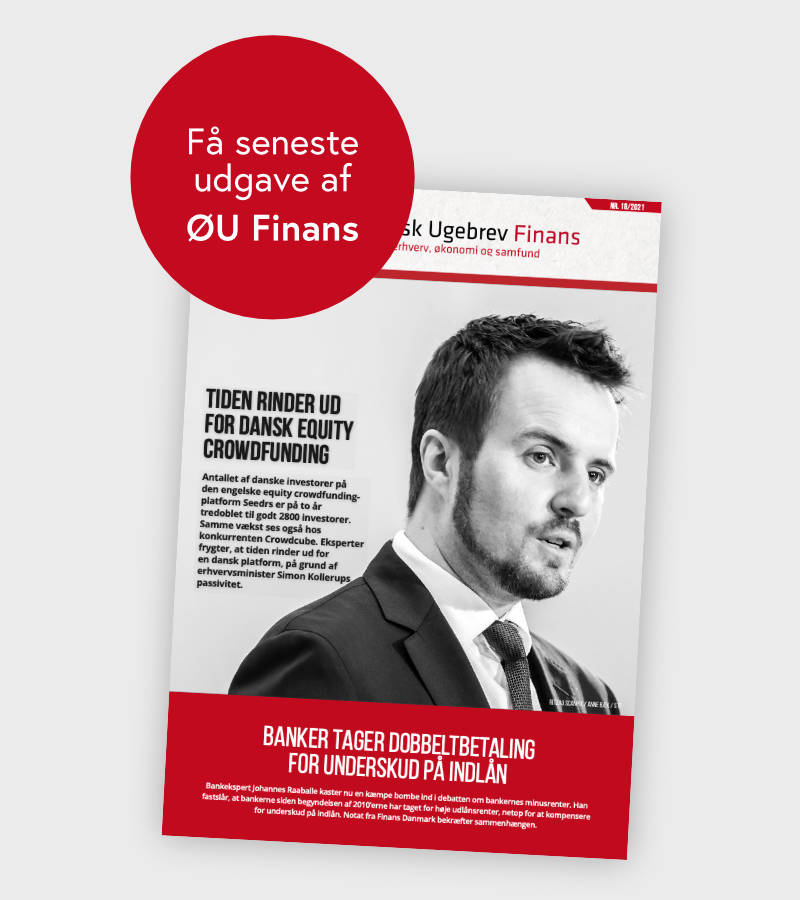Deutsche Bank: Europæiske vækstselskaber har markant vanskeligere ved at hente risikovillig kapital, end amerikanske selskaber har: Banken skriver i en analyse: ”Vibrant capital markets are needed to finance the economy of the future. Risk capital markets are particularly important in fostering the innovations needed for the green and digital transition. They play a key role in spotting young, promising companies, and providing them with funding to realise their growth potential. This usually involves direct equity funding in the form of venture capital (VC). EU risk capital markets have grown considerably over the last decade, resulting in annual VC investments of USD 20.8 bn in 2022. However, rising interest rates and heightened geopolitical uncertainties led to a slowdown in VC investment during the past two years. Market size varies substantially between regions, reflecting differences in innovation capacities. EU countries in the North and West have larger pools of risk capital than in the South or East. The venture capital market in the EU is significantly smaller than in the US, where USD 246 bn of VC has been invested in 2022. As a consequence, it is more difficult for young European firms to scale up compared to their US peers.”
Læs hele analysen her
Unicredits Erik F. Nielsen om forskelle i levestandard og gennemsnitlige levetid i Europa og USA: “US life expectancy at birth has dropped to an extremely low (for a high income country) of just 76 years, from almost 79 years five years ago. In contrast, life expectancy at birth in Europe has increased by around 2.5 years during the same period, to 82 years in the eurozone and 80 years in the EU as a whole. This seems worth restating: In spite of the US’ much higher per capital income, the average child being born in the US today is expected to live a life that’s six years (or almost 8%) shorter than if it had been born in the eurozone. This decline in US life expectancy has taken place in spite of the fact that the US spends twice as much as Europe on healthcare, as a share of GDP, at roughly 18% of GDP, versus 8%-10% in Europe – but, as we know, with extremely uneven availability of care in the US. Part of this conundrum is explained by US’s extremely high homicide rate. It’s five times higher per capita than in Europe, and impacts disproportionately younger people. One mirror effect of this, in turn, is the US’s incarce ration rate of about 530 (per 100,000 inhabitants), 5-8 times higher than in Europe. Incidentally, at an estimated cost of USD 74bn annually, keeping America’s 1.8 million people in prison adds almost 0.3 (pretty useless) percentage points to annual US GDP growth – unless, of course, you build a counterfactual in which these unfortunate 1.8 million inmates would have been productive members of the work force.”
Læs hele Erik F. Nielsens klumme her
Nordea: Uden medicinalindustrien havde Danmark haft minus BNP-vækst sidste år: ”Stor fremgang i medicinalindustriens produktion og revisioner af data ændrer billedet af udviklingen i dansk økonomi fundamentalt. Så kom Danmark ud af den tekniske recession, som landet faktisk aldrig befandt sig i. Med lidt af et brag endda. Danmarks Statistik (DS) har netop offentliggjort sin første beregning af nationalregnskabet for 4. kvartal og den peger på en fremgang i økonomien på hele 2% over kvartalet. Det er en voldsom vækst, som også betyder, at væksten for hele 2023 nu kan opgøres til hele 1,8%. Samtidig er der foretaget en voldsomt stor revision til 3. kvartals tal. Der er BNP-væksten nemlig opjusteret fra -0,7% til en fremgang på 0,4%!! Så den tekniske recession var altså blot en illusion. Det er ifølge DS transithandel med gas samt volatile gaspriser, der ligger bag den udvikling.”
Læs hele analysen her
Bain: Five Themes That Will Fundamentally Change Wholesale Banking: Konsulenthuset skriver i en intro, at “slower growth raises new challenges around technology, talent, and environmental issues. Wholesale banks will likely face slower growth over the next few years, while heavy spending on IT puts pressure on short-term profitability. Our extensive interviews with wholesale banking CEOs and senior executives suggest that returning to growth will require responses to several trends affecting the industry. Three of the trends revolve around technology: modernizing core IT, putting generative artificial intelligence to work, and adopting digital assets.”
Læs hele analysen her
Morten W. Langer
Intro-pris i 3 måneder
Få unik indsigt i de vigtigste erhvervsbegivenheder og dybdegående analyser, så du som investor, rådgiver og topleder kan handle proaktivt og kapitalisere på ændringer.
- Fuld adgang til ugebrev.dk
- Nyhedsmails med daglige opdateringer
- Ingen binding
199 kr./måned
Normalpris 349 kr./måned
199 kr./md. de første tre måneder,
herefter 349 kr./md.
Allerede abonnent? Log ind her






